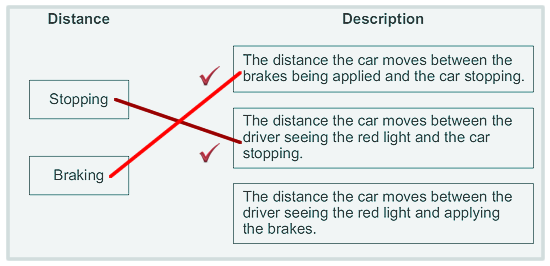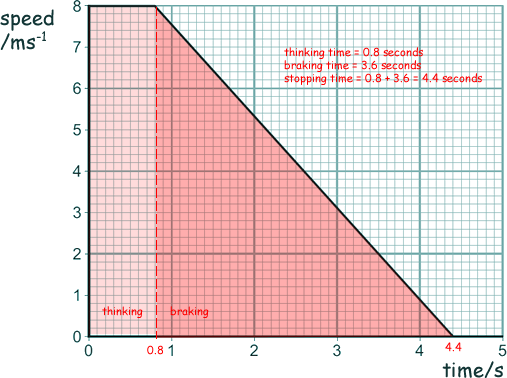GCSE Questions: Forces
Q9. A car driver sees the traffic lights ahead change to red.
The driver applies the brakes to stop the car. The stopping distance of the car is the thinking distance plus the braking distance.
(a) Draw one line from each distance to the description of that distance.

[2 marks]
(b) The graph shows how the speed of the car changes from the instant that the driver sees the traffic lights change to red.

(i) What is the reaction time of the driver? 0.8 s
[1 mark]
(ii) Using a mobile phone while driving may increase the reaction time of the driver. Explain the effect of an increased reaction time on the stopping distance of the car.
The car will continue to travel at whatever speed it is travelling at for the extra time you are 'thinking' before reacting to the situation change - thinking time increases.  Therefore the stopping distance will increase (by the time multiplied by the speed you are travelling at).
Therefore the stopping distance will increase (by the time multiplied by the speed you are travelling at).
[2 marks]
(iii) The car has a mass of 750 kg.
Calculate the kinetic energy of the car when the car is travelling at 8 m/s.
Ek = ½mv2
Ek = ½ x 750 x 82
Ek = 24,000 J
J
[3 marks]
(c) When the brakes of the car are applied:
(i) What happens to the temperature of the brake pads? It increases 
(ii) What happens to the kinetic energy of the car? It decreases 
[2 marks]
[10 Marks TOTAL]








